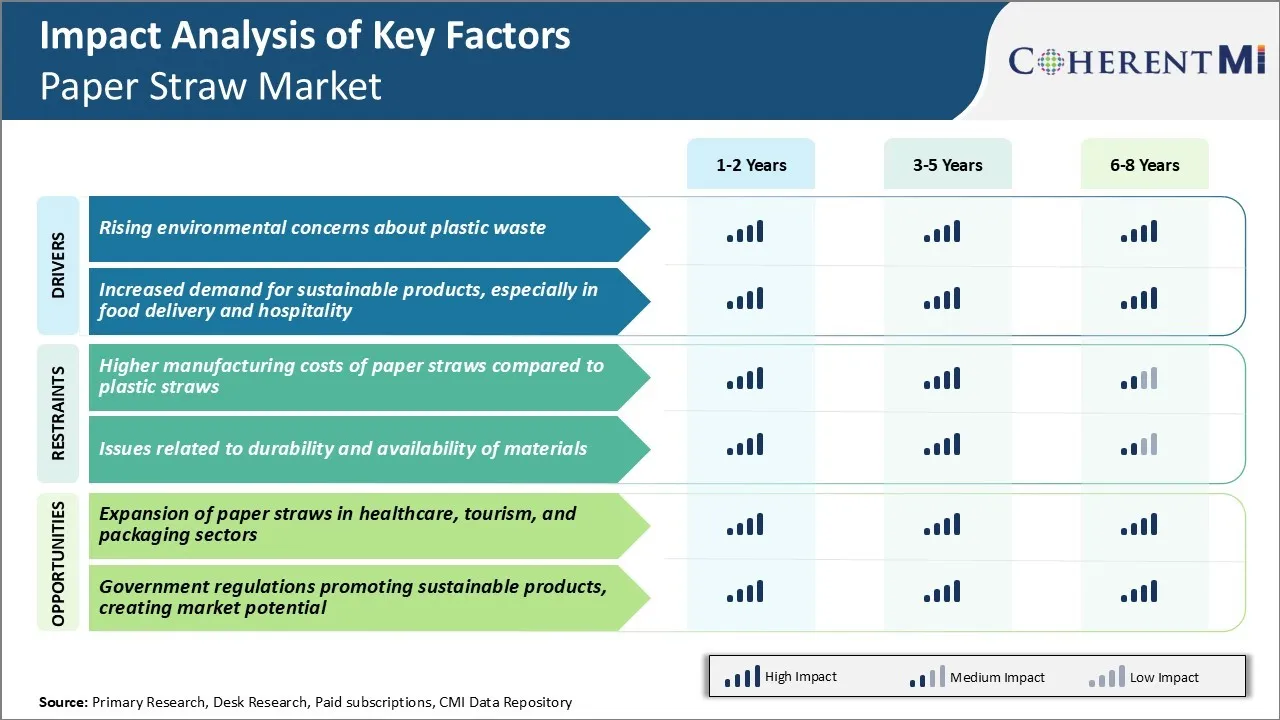Paper Straw Market Trends
Market Driver - Rising Environmental Concerns About Plastic Waste
As people become increasingly aware of the environmental damage caused by single-use plastics, there is a growing sentiment against their use. Concerns about plastic pollution have given rise to the global break free from plastic movement. Major economies like the European Union have pledged to ban commonly littered single-use plastic items by 2021. Other countries are following suit with their own plastic waste management strategies and bans.
The paper straw option provides a simple and effective alternative for consumers who want to reduce their plastic footprint. Unlike bulky stainless steel or glass straws, paper straws maintain the portability and convenience that plastic straws offer. Many see paper straws as a viable and pragmatic interim solution until more sustainable packaging systems are developed across industries.
Supply of plastic-free drinking options like paper straws is poised to get a major boost to satisfy the shifting preferences of socially responsible buyers. Manufacturers in the paper straw market are actively marketing their products as eco-friendly options that check the rising demand for earth-conscious alternatives to plastics.
Market Driver - Increased Demand for Sustainable Products, Especially in Food Delivery and Hospitality
Consumers, especially millennials and gen Z, consider a company's environmental and social impact before making purchasing decisions. As they become the dominant spending demographic, businesses recognize the commercial importance of being seen to be eco-friendly. The hospitality and food delivery sectors also generate a vast amount of packaging waste regularly. This makes them prime targets for those seeking more sustainable alternatives.
Many restaurants and cafes have proactively switched to paper straws, lids and cutlery to present green credentials to their customers. Major fast food and coffee chains too have announced plastic reduction plans involving substitutions with biodegradable materials.
Ride-hailing and food delivery platforms are increasingly emphasizing on eco-packaging partnerships. Replacing conventional plastic packaging like straws with paper variants contributes greatly to their sustainability marketing. Besides the gains in customer goodwill and retention, sustainability transitions can aid firms' access to green financing and partnership opportunities as well. This is expected to drive growth of the paper straw market.

Market Challenge - Higher Manufacturing Costs of Paper Straws Compared to Plastic Straws
One of the major challenges currently faced by the paper straw market is the higher manufacturing costs associated with paper straws as compared to plastic straws. Paper straw manufacturing requires more complex production processes and uses more expensive raw materials like virgin wood pulp or recycled paper. This makes the per unit production cost of paper straws at least three times higher than plastic straws.
As plastic straws are made from cheap petroleum-based materials through injection molding, their manufacturing costs are significantly lower. The higher costs make it difficult for paper straw manufacturers to compete on price with plastic straw companies. It also raises the overall price of paper straws for end consumers and businesses, limiting wider adoption.
To drive volumes and achieve economies of scale, paper straw producers need to bring down manufacturing costs substantially through innovations, automation, and improving yields to make paper straws more viable commercially against plastic.
Market Opportunity - Expansion of Paper Straws in Healthcare, Tourism, and Packaging Sectors
One significant opportunity for the future growth of the paper straw market is the expansion into new sectors such as healthcare, tourism and flexible packaging. There is growing demand for eco-friendly straw options from hospitals, restaurants, airlines, hotels and different packaging applications due to stringent waste management regulations and consumer preferences for sustainable products.
Manufacturers in the paper straws market can leverage this demand by developing customized paper straw solutions suitable for these industries and targeting them aggressively. They also need to highlight various advantages of paper like its compostable nature, plant-based origin and recycling abilities. If paper straw makers focus on these expanding sectors, it can help boost volumes and revenues while enhancing the market footprint of paper straws globally. With innovative product development and strategic collaborations, healthcare, tourism and packaging are promising avenues that can drive future expansion of the paper straw market.